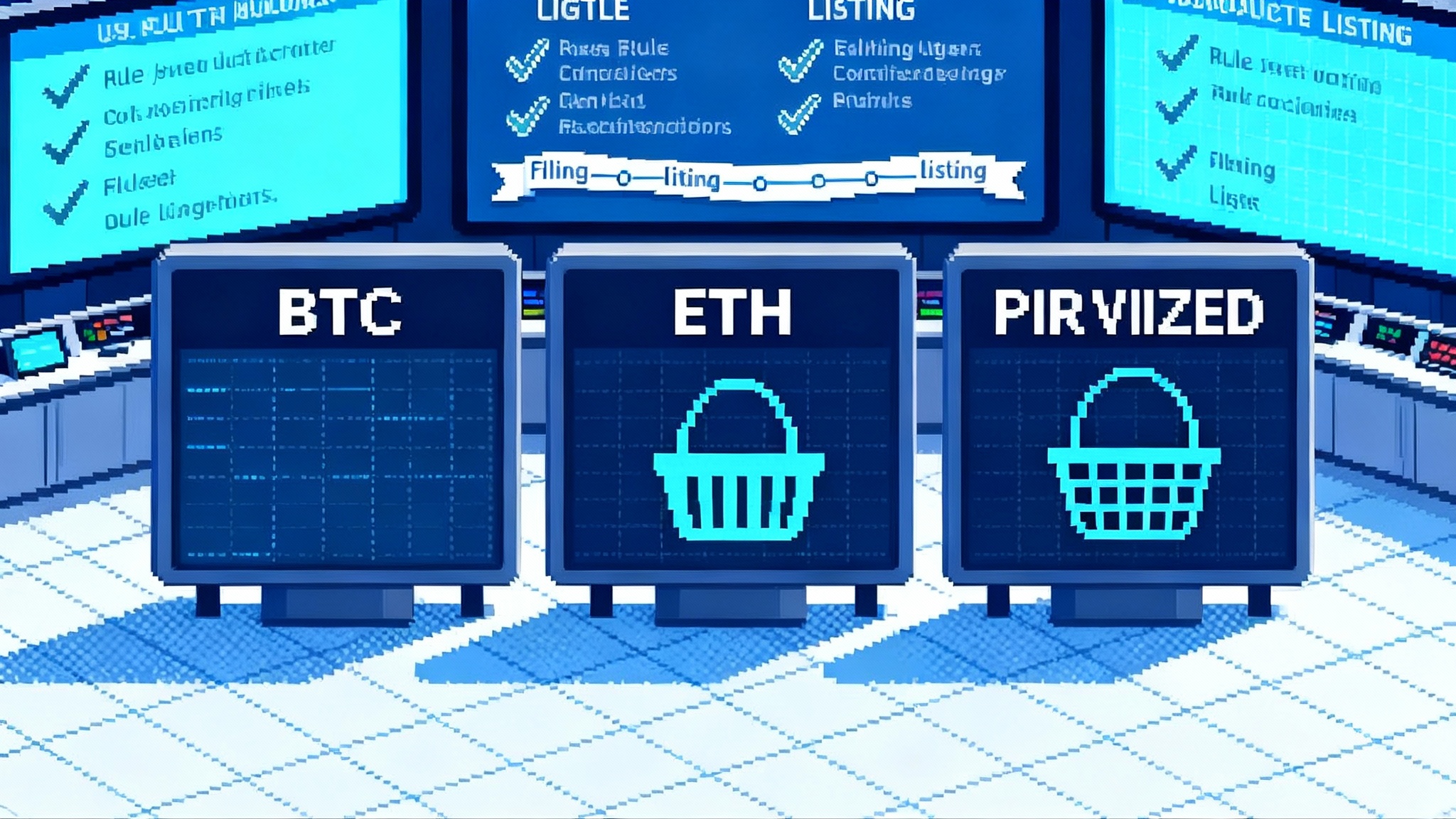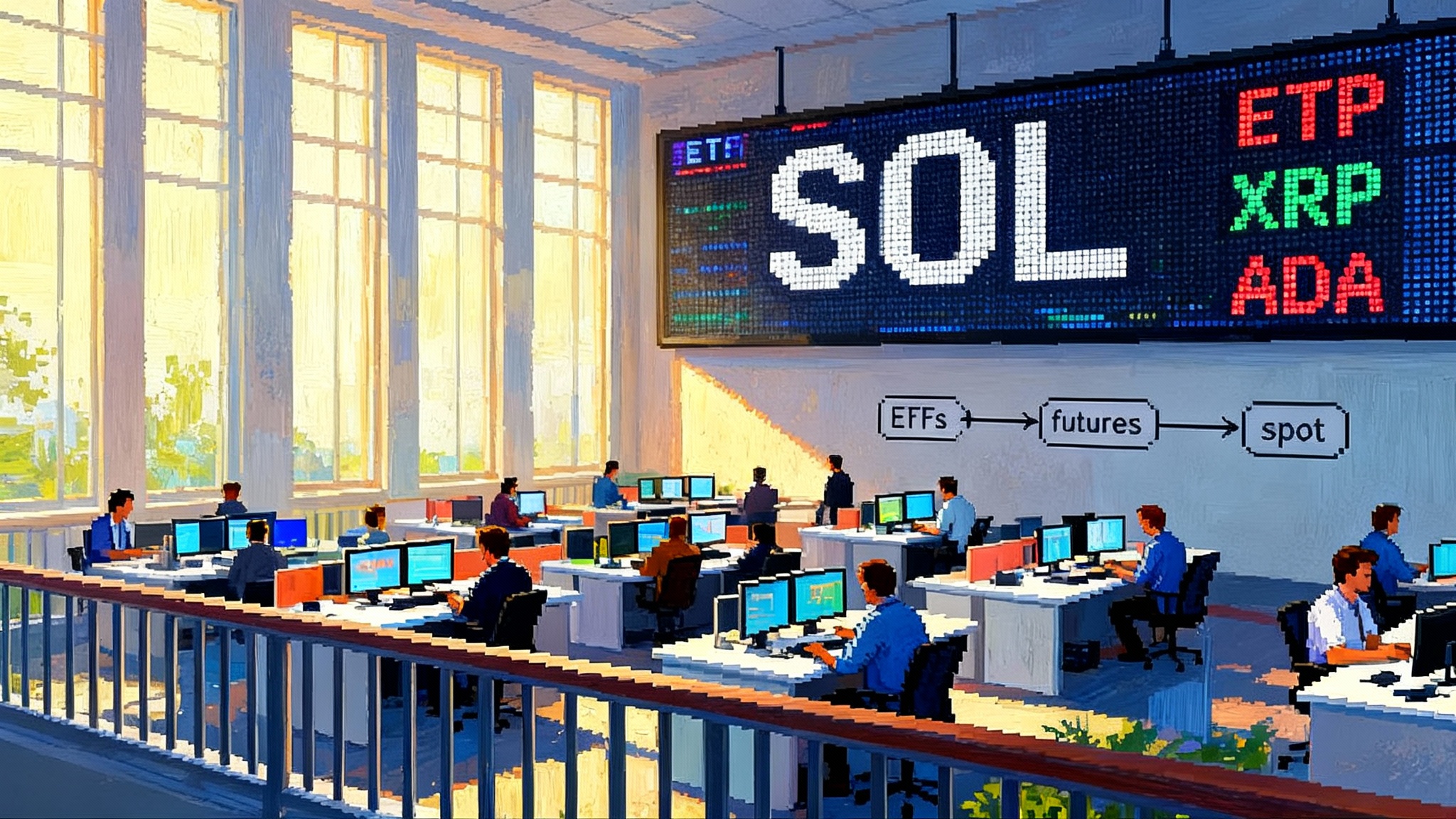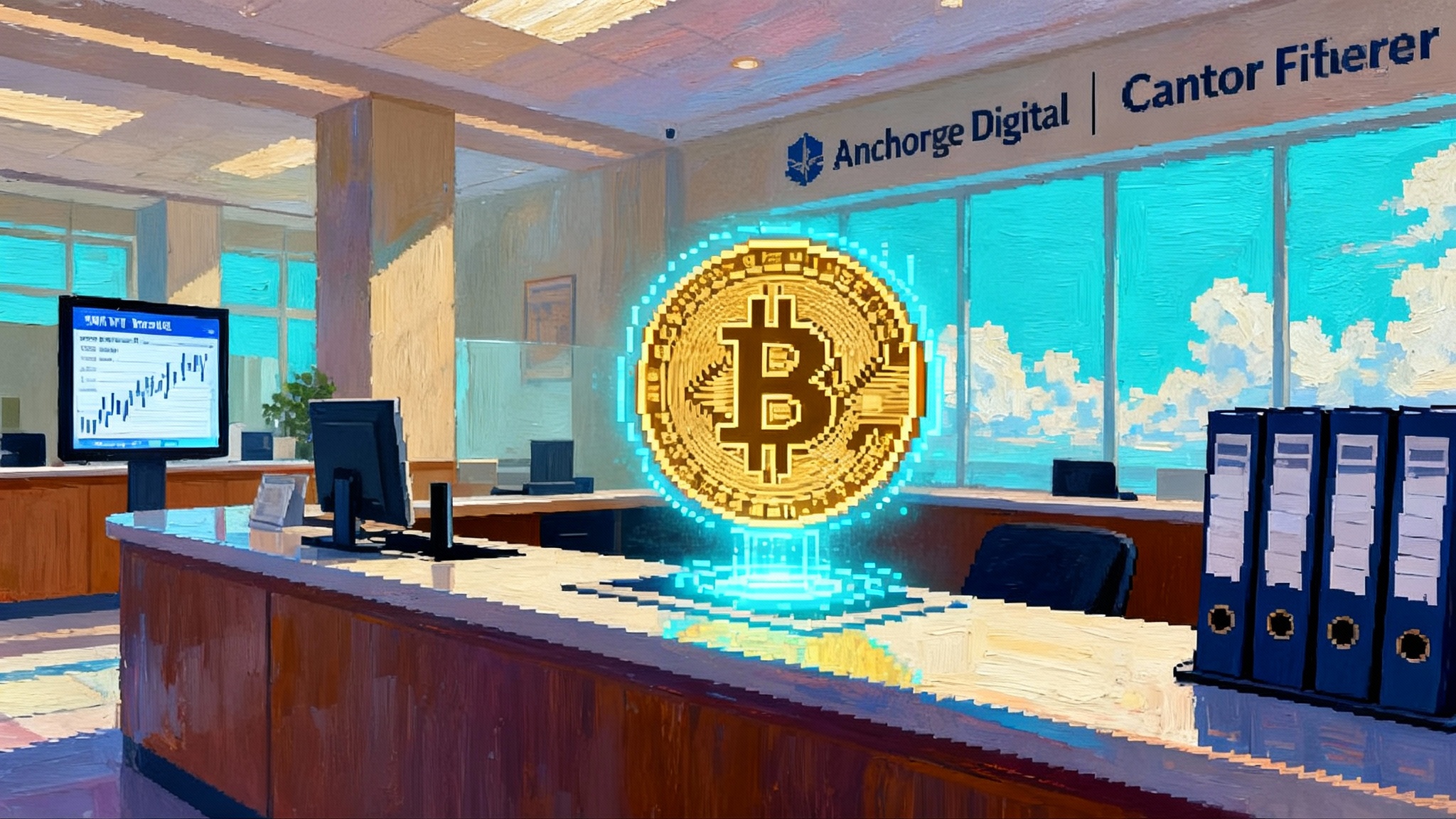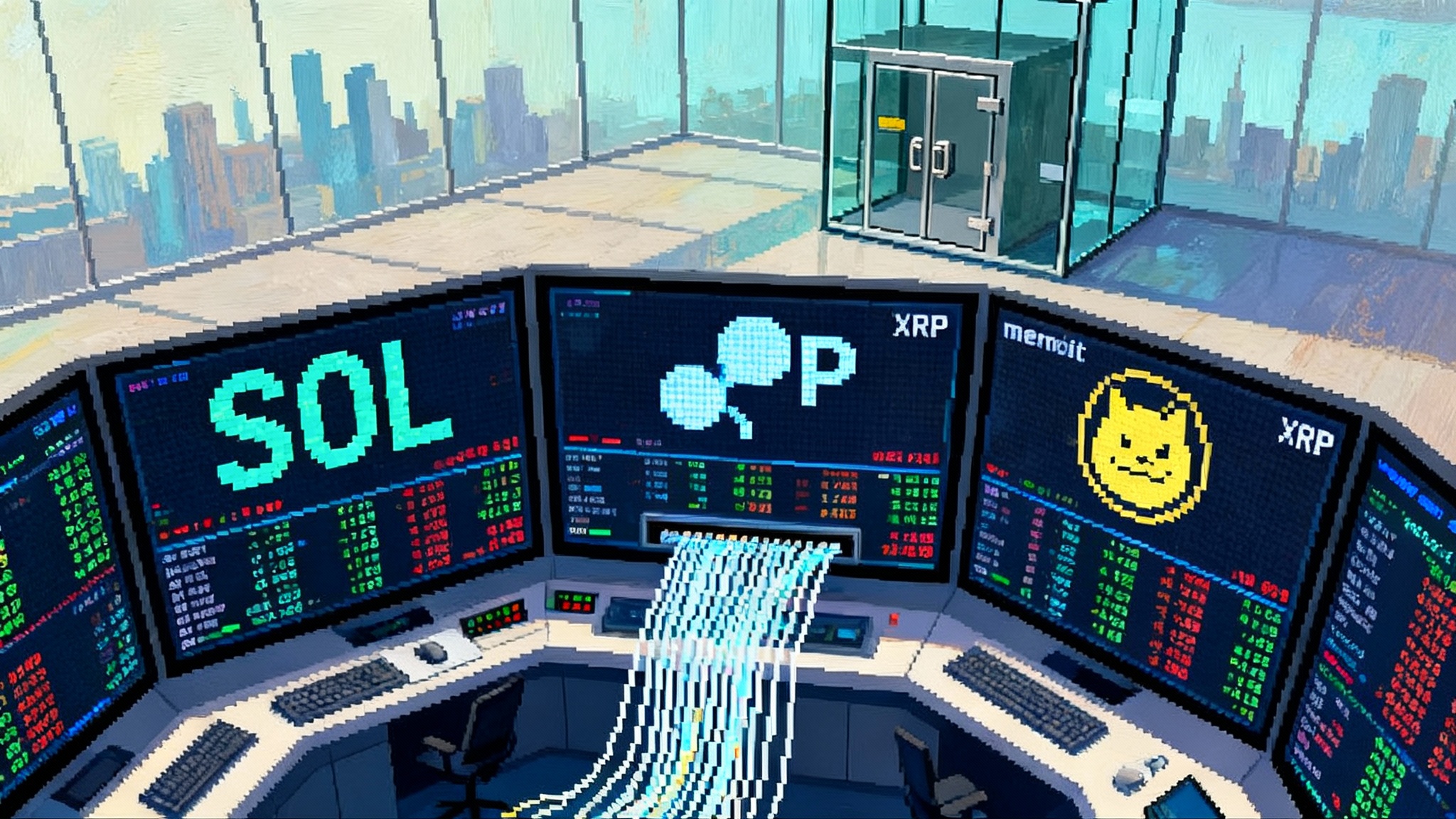SEC’s generic listing rules reshape the crypto ETF playbook
The SEC just greenlit generic listing standards for commodity-based ETPs, giving spot crypto ETFs a rules-based on ramp instead of one-off approvals. Here is how Rule 19b-4(e) works in practice, who benefits first, what could list next, and the risks to watch.

What just changed
On September 17, 2025, the Securities and Exchange Commission approved generic listing standards that let U.S. exchanges list certain commodity-based ETPs, including those that hold digital asset commodities, without a separate product-by-product approval. That is a clean break from the case-by-case grind that spot bitcoin and ether funds faced through 2024. You can read the SEC order approving generic standards.
The order lets an exchange list a qualifying commodity-based trust share under its own rules by relying on Rule 19b-4(e). In practice, that removes months of uncertainty and comment cycles for products that meet objective criteria.
The new rule in plain English
The generic standards focus on what sits inside the ETP. Each commodity in the trust must meet at least one of these tests:
- The commodity trades on a market that is a member of the Intermarket Surveillance Group, and the listing exchange can obtain trading information from that market.
- There is a futures contract on the commodity that has traded for at least six months on a CFTC regulated designated contract market, and the listing exchange has a surveillance sharing agreement with that market.
- On an initial basis, there is an ETF listed on a national securities exchange that provides at least 40 percent of its net asset value in economic exposure to the same commodity.
If every component checks one of those boxes, the exchange can list under its generic rule with post-listing disclosures rather than a fresh Commission order.
What changes for issuers and exchanges
- Speed. Products built around qualifying assets can reach market faster because the exchange can list under its own rule.
- Predictability. The standards are objective. Issuers and exchanges can model eligibility at the design stage instead of guessing how the Commission will view surveillance and manipulation risk.
- Product scope. Exchanges gain a template to list single-asset trusts and baskets, provided each component meets a test. That favors clear, rule-based index exposures.
- Operational burden. Prospectus drafting, disclosure, custody, pricing sources, creation and redemption mechanics, and market maker readiness still matter. Generic listing streamlines only the exchange rule approval step.
For a deeper primer on implications for baskets and in-kind flows, see our overview of multi-asset crypto ETFs and in-kind flows.
Which crypto assets are likely next beyond BTC and ETH
The futures test is the practical gate for most digital assets today. Bitcoin and ether both have established CME futures that satisfy the six month requirement. Expect more variations on these two, including different index methodologies, low fee share classes, and two-asset blends that remain 100 percent BTC and ETH. For more context, see our explainer on fast-track spot crypto ETFs.
For other large cap tokens, the path depends on market structure:
- Solana. There is no U.S. designated contract market offering solana futures today and no ISG member spot venue. A single-asset solana trust will not qualify under the generic rule yet. Our preview of the Solana ETF decision path breaks down the scenarios.
- XRP. Same story as solana. Without a CFTC regulated futures market or an ISG member spot market, XRP does not pass a generic test.
- Others such as cardano or avalanche. The analysis mirrors solana and XRP. No U.S. DCM futures and no ISG spot market means not generically eligible today.
Bottom line: BTC and ETH can proliferate under the new rule. Other tokens need either new U.S. futures that run at least six months, an ISG member spot market, or a separate Commission approval.
How multi-asset crypto products could emerge
There are now two lanes for baskets:
- Generic lane. Every component must meet one of the three tests. Today that effectively means a two-asset basket of BTC and ETH can qualify under the futures test.
- Custom lane. The Commission also approved a separate multi-asset trust that uses a rules-based index and limits non-approved components to a small slice. See the SEC order approving Grayscale Digital Large Cap Fund for a concrete example.
Expect issuers to propose index methodologies that keep most exposure in assets that already meet the generic tests while arguing that a limited sleeve in other assets does not undermine investor protections.
Surveillance sharing and market integrity by design
The framework bakes surveillance expectations into eligibility. If a product relies on the futures test, the listing exchange must have a comprehensive surveillance sharing agreement with the designated contract market. That unlocks trading data and alerts that help detect manipulation.
The ISG market test goes further. If the underlying trades on an ISG member market, the exchange can source trading information across members to monitor aberrant activity. Crypto spot venues in the U.S. are not ISG members today, so this test matters more for traditional commodities. If that changes, the calculus changes with it.
Liquidity, creations and redemptions, and spreads
More products usually mean tighter spreads on the most liquid exposures, but only if the plumbing scales:
- Authorized participants and market makers. APs need reliable access to the underlying assets. That infrastructure exists at scale for bitcoin and ether.
- Pricing sources. Fair value depends on robust, manipulation-resistant reference rates with clear inclusion criteria and outage handling. Products that rely on a single venue print or an opaque index will face skepticism.
- Creations and redemptions. In-kind is cleaner for spot crypto trusts because it reduces slippage and operational cash handling. Cash processes can work but push execution risk onto the sponsor and can widen spreads in fast markets.
On day one, spreads depend on how many APs sign up, the state of borrow markets for hedging, and custodian throughput. Over time, fee pressure and competition pull spreads tighter.
Custody and operational risk
Generic listing does not change the need for a qualified custodian, segregation practices, insurance arrangements, and key management procedures. Expect the largest custodians to gain share as issuers cluster around providers with proven incident response, SOC audit histories, and 24x7 settlement windows.
Issuers still need clear protocols for hard forks, token upgrades, chain halts, and airdrops. Index products must specify how they treat new assets that appear in a reference index if those assets do not meet generic tests.
Fees, competition, and the coming price war
Generic listing makes it easier to add marginally differentiated products, which tends to push fees down for BTC and ETH exposures. New share classes aimed at different channels are likely. For baskets, first movers may command a temporary premium, but only if the index methodology is transparent and repeatable.
Options and derivatives on top of crypto ETPs
As underlying ETPs proliferate, exchanges will expand listed options and index derivatives tied to those products. The more standardized the ETP and the deeper its primary market liquidity, the tighter options markets become.
Timelines and what to watch next
- Near term, Q4 2025. Expect a cluster of new BTC and ETH products that fit cleanly within the futures-based test. Some will be pure single-asset trusts with different fee structures. Others will be two-asset blends or rule-based tilts that still satisfy the generic rule.
- Six to twelve months out. If a U.S. designated contract market lists and maintains liquid futures on another large cap token for at least six months, that token becomes eligible for generic listing. Watch exchange product calendars and CFTC designated contract market postings.
- Structural developments. Track any move by major spot crypto venues toward ISG participation, new surveillance sharing agreements across futures and cash markets, and upgrades to reference rate governance.
- Secondary effects. Index providers will adjust digital asset benchmarks to the new feasibility boundary. Advisors will build model portfolios with prepackaged crypto sleeves, and retirement platforms will reassess gatekeeping as operational risk falls.
Key risks for investors
- Market manipulation. Surveillance is stronger under the new framework, but crypto markets still face wash trading and cross-market spoofing. Check reference rates and the surveillance hooks the listing exchange describes.
- Concentration and index drift. Many baskets will be heavily concentrated in BTC and ETH for a while. If you want exposure to other assets, read the methodology to understand caps, buffers, and rebalancing rules.
- Liquidity mismatch. New products can trade at wider spreads until APs and market makers get comfortable. Use limit orders and be mindful of creation and redemption disruptions during volatile windows.
- Custody events. Even with strong key management, incidents can happen. Review disclosures on incident response, insurance, and hot-cold storage splits.
- Regulatory whiplash. Changes to state custody rules, federal definitions of crypto asset commodities, or bank capital treatment can alter product structure or money movement.
- Tax treatment. Commodity-based trusts can have different tax profiles than 1940 Act funds. Review the tax section of the prospectus and how your broker treats income and expenses.
Bottom line
The SEC has replaced a bespoke gatekeeping process with a rules-based on ramp for commodity-based crypto ETPs. For bitcoin and ether, that will accelerate competition and likely compress fees. For other tokens, the door opens once there is a qualifying U.S. futures market or comparable surveillance framework. Multi-asset products will grow first where most exposure sits in BTC and ETH, with limited sleeves in other names until underlying markets mature. Choice is expanding, but quality still varies across index design, trading mechanics, and operational controls. The checklist has changed. The homework remains.








